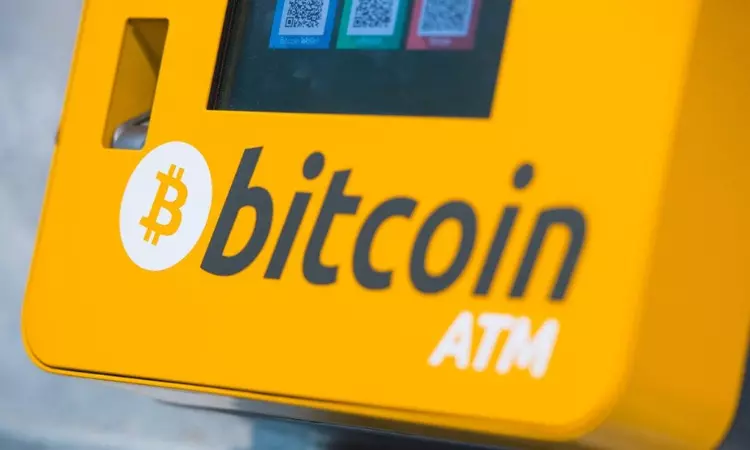
If there was one word to describe Bitcoin and cryptocurrencies, it would be volatile. As rumors, sentiment and fundamental developments quickly entered the market, cryptocurrency prices rose and then seemed to crash almost as fast. In just four days in early June, Bitcoin fell from $30,500 to around $23,500, a drop of nearly 23%. During the same period, Ethereum plummeted by more than 31%, and it seems that the entire crypto market is down this year.
This volatility appeals to traders looking to profit — but it’s disconcerting, especially for new investors looking to get started. Traders can expect more volatility as new cryptocurrencies emerge and others are eliminated.
Given how volatile cryptocurrencies are, how should investors manage risk?
5 things to do when cryptocurrency falls
Are you afraid of falling prices or are you keen to buy something cheaper? Either way, here are five things you need to do when cryptocurrency prices plummet.
1. Keep calm
Whether you decide to sell your cryptocurrency or see the dip as an opportunity to buy more, you need to trade calmly. Making emotional decisions, especially when trading, rarely leads to anything good. Therefore, before you panic enter the market, you should first consider why you are trading cryptocurrencies.
- Are you investing because you believe in long-term opportunities?
- Or are you here to make quick money with short-term trades?
The answers to these questions can help you make the right decision. Either way, you want to act on your goals. In other words, if you believe in long-term opportunities, think with that mindset. If you’re here for a quick deal, think with that attitude.
2. Assess the situation
Is there any news that drives the trading price of Bitcoin and other cryptocurrencies? There may be fundamental news that has changed market sentiment, not just price action or rumors driving sentiment.
In 2021, real developments put pressure on prices. China’s move to ban financial institutions from providing cryptocurrency-related services is another blow, as the country banned cryptocurrency exchanges back in 2017, although it did not prohibit individuals from owning cryptocurrencies. Then, in late 2021, the Federal Reserve decided to reduce liquidity in the financial system, and many cryptocurrencies found themselves in a severe downturn until 2022.
The stablecoin TerraUSD collapsed in May 2022 when traders staged an old-fashioned “run on the bank” because they feared it didn’t have a crypto asset to secure a peg to the U.S. dollar. The news spread to the rest of the cryptocurrency market as traders feared the sell-off would lead to more.
As such, the moves are another major blow to a booming market that has been enjoying massive capital inflows.
3. Remember that volatility is the name of the game
Cryptocurrencies are inherently unstable. Since crypto does not generate cash flow, traders must rely on changes in sentiment to push prices higher. This means the market can swing between wild optimism (as it will be in early 2021) and pessimistic despair (as it will be in a few months). The excitement surrounding Coinbase’s 2021 IPO contributed to positive sentiment towards the cryptocurrency, while the reduction in monetary stimulus in late 2021 and early 2022 led to bearish sentiment.
So, when you own an emotion-driven asset, traders’ emotions drive the market. The same goes for stocks, but they can also get really growing cash flow from the issuing company to accelerate them higher.
This volatility is what attracts professional traders who use powerful algorithms for complex trades, which “grandfather and pop” traders often cannot take advantage of. Traders love volatility because it gives them the opportunity to make money — it’s Wall Street’s game.
4. Assess the future
Analyze how the fundamentals of cryptocurrencies may evolve in the face of new developments: Will governments crack down? Will they encourage wider adoption? Will new regulations help rather than hinder the cryptocurrency market? What else can move the market?
Is China’s move to ban cryptocurrencies a precursor to the future? Maybe. India has considered the idea of banning cryptocurrencies, while Russia’s central bank has also opposed it. But other countries, including the United States, are exploring ways to regulate cryptocurrencies rather than ban them outright. Some countries, namely El Salvador and the Central African Republic, even use it as legal tender.
It remains to be seen how other major countries will proceed, but it is clear that cryptocurrencies face real threats in the form of regulation, including the threat that could literally put them out of business. As cryptocurrency gains traction, it risks becoming a victim of its own success.
It doesn’t help that encryption is used as part of ransomware attacks and other criminal activities.
Therefore, it cannot be ruled out that the utopian dreams of cryptocurrency providers will be overturned by law. Of course, political influence is only one aspect of their future. Crypto also faces other significant hurdles, including the financial and environmental costs of mining.
Another risk: As I discussed on Cheddar TV, due to their volatility, many cryptocurrencies are mostly useless as a currency and “sold to those who have no intention of using them” as a currency. Finally, the IRS tax rules make cryptocurrencies unwieldy as a payment system.
5. Determine how to act
After you have calmed down and assessed the situation and what this means for the future, you should consider how to act.
- Are Risks Really Hidden Opportunities? If you look at it this way, you may want to keep your position or take advantage of the dip to invest more.
- Will the risk persist or even worsen? If so, you should take the loss now and stay away from the game in the future.
- Is the situation too dire? If it’s hard to see the way forward, you might consider splitting the spread and selling part of your position today while still having upside potential tomorrow.
Whichever way you go, you need an action plan that reflects your views on the potential risks and rewards of cryptocurrencies. But it’s worth noting that some of the world’s savviest investors won’t touch cryptocurrencies and will warn you not to. Charlie Munger, the legendary investor and Berkshire Hathaway vice chairman, said: “I admire the Chinese, and I think they made the right decision and just outlawed them.”
Alternatives to cryptocurrencies
Cryptocurrencies are highly volatile and speculative, and many investors are reluctant to invest large amounts of money or no money at all. The good news for investors is that they have cryptocurrency alternatives that offer attractive long-term returns:
- Individual stocks. If you are willing to do the analysis and follow the company further, you can get very good returns by investing in individual stocks like Amazon or Apple.
- Dividend stocks. If you’re looking for cash returns as part of your investment, you can buy dividend stocks. These tend to be less volatile than the overall stock.
- Index funds. If you don’t want to go through the hassle of finding individual stocks but still want high returns, index funds are a great option.
- Index funds own stocks or other assets designed to track a specific collection of stocks (such as the S&P 500).
- REITs. If you’re looking for a healthy cash payout, REITs are another option for dividend stocks. REITs own and operate real estate and have a proven track record of long-term returns. You can even buy a fund so you don’t have to pick and choose individual REITs.
These are some of the most promising cryptocurrency alternatives.
Konkluzja
The fall in the cryptocurrency market will make you uneasy. Use it as a wake-up call to rethink why you entered the market in the first place. What opportunities and risks does it present?
On the one hand, while Bitcoin has rebounded strongly after previous sharp drops, there is no guarantee that it will do so again, especially when it faces serious survival issues as countries stop using it, and may even own it, ban its use. This real risk can destroy or benefit an investment when reality is less severe than expected.
Ucz się więcej:
-
-
-
-
Recenzja karty Delta Skymiles® Reserve American Express – zobacz więcej.
-
-
Odkryj it® Nagrody w postaci kart nagród i zobacz, jak to działa


